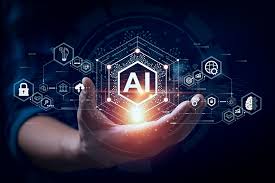The Environmental Impact of AI: Understanding the Hidden Costs
The rise of artificial intelligence (AI) has transformed various industries, but it’s important to address the environmental Impact of AI. From powering high-performance computing to managing electronic waste, AI’s footprint on our planet is growing. This post delves into the hidden costs associated with AI and explores strategies for reducing its environmental impact. The rapid advancement of artificial intelligence (AI) has brought significant benefits to various industries, from healthcare to finance. However, behind AI’s transformative potential lies a growing environmental concern.
Energy Consumption: A Growing Concern
One of the primary concerns regarding the environmental impact of AI is its significant energy consumption. Training advanced AI models requires massive computational power, which translates into substantial electricity use. Deep learning algorithms, fundamental to many AI systems, depend on high-performance hardware like GPUs and TPUs.
For instance, training large language models such as GPT-3 or BERT demands hundreds of teraflops of computational power. This intense computational requirement can emit over 626,000 pounds of CO2, equivalent to the emissions of five cars over their entire lifetime. As AI models become more sophisticated, their energy needs and environmental impact increase.
Data Centers: Powering AI with High Costs
Data centers are crucial for the functioning of AI, providing the necessary infrastructure to store and process vast amounts of data. However, these data centers consume large amounts of energy, primarily used for cooling servers. Despite some advancements in using renewable energy sources, many data centers still rely on fossil fuels.
A 2020 report from the International Energy Agency (IEA) highlights that data centers globally account for about 1% of total electricity consumption. As AI technology continues to advance, this figure is expected to rise, particularly in regions where the energy grid depends on coal and other non-renewable sources. This reliance further exacerbates the environmental impact of AI.
E-Waste and Resource Depletion: Hidden Environmental Costs
The hardware required for AI, such as GPUs and servers, has a short life cycle. As AI technology evolves rapidly, older hardware becomes obsolete quickly, leading to increasing amounts of electronic waste (e-waste). E-waste is a significant environmental issue, as it contains harmful materials like rare earth metals, which can leach into the environment if not properly recycled.
The production and disposal of AI hardware also contribute to resource depletion. Metals like cobalt, lithium, and nickel, essential for batteries and processors, are mined in ways that can cause ecological damage. Moreover, the disposal of e-waste often results in soil and water contamination, posing risks to both the environment and human health.
Mitigating the Environmental Impact of AI: Practical Solutions
Addressing the environmental impact of AI requires a multifaceted approach. Several strategies can help mitigate these effects and promote more sustainable practices in the tech industry.
Greener Data Centers:
Transitioning to energy-efficient data centers powered by renewable energy sources is one of the most effective solutions. Companies like Google and Microsoft have already made significant strides in this area, using wind, solar, and hydropower to reduce their carbon footprints. Wider adoption of these practices could substantially lower the environmental impact of AI.
Optimizing AI Models:
Researchers and developers can work on creating more efficient AI models that require less computational power. Advances in algorithms that perform complex tasks with less data can reduce the energy needed for training and running AI systems. This approach not only helps lower energy consumption but also reduces the overall environmental footprint of AI.
Extending Hardware Lifecycles:
Encouraging the use of durable hardware with longer lifespans can help mitigate e-waste. Designing modular or upgradeable components allows companies to extend the life of their equipment rather than discarding it for new models. This strategy can significantly reduce the volume of electronic waste generated by the rapid advancement of AI technology.
Improving Recycling Practices:
Investing in better recycling infrastructure is crucial for managing e-waste more effectively. Governments and tech companies should collaborate on initiatives that focus on the safe disposal and recycling of rare earth metals and other materials used in AI hardware. Enhanced recycling practices can help minimize environmental contamination and resource depletion.
Balancing Innovation with Sustainability
AI holds immense potential for innovation across various fields, from healthcare to entertainment. However, its environmental impact cannot be overlooked. By implementing more sustainable practices, optimizing AI models, and addressing issues related to e-waste and resource depletion, we can work towards a future where technological progress aligns with environmental responsibility.
The key to a greener AI future lies in finding a balance between the benefits of technological advancements and the need to protect our planet. Through collective efforts and a commitment to sustainable practices, we can mitigate the environmental impact of AI and ensure that its development contributes positively to society and the environment.
Conclusion
The Environmental Impact of AI promises transformative advancements across numerous sectors, and its environmental impact warrants serious consideration. The significant energy consumption required for training AI models, the energy demands of data centers, and the growing issues of electronic waste and resource depletion highlight the hidden costs of this technology. Balancing the benefits of AI with environmental stewardship is crucial for a sustainable future. With concerted efforts and a commitment to responsible practices, it is possible to develop AI technologies that contribute positively to society without compromising the health of our planet.
















